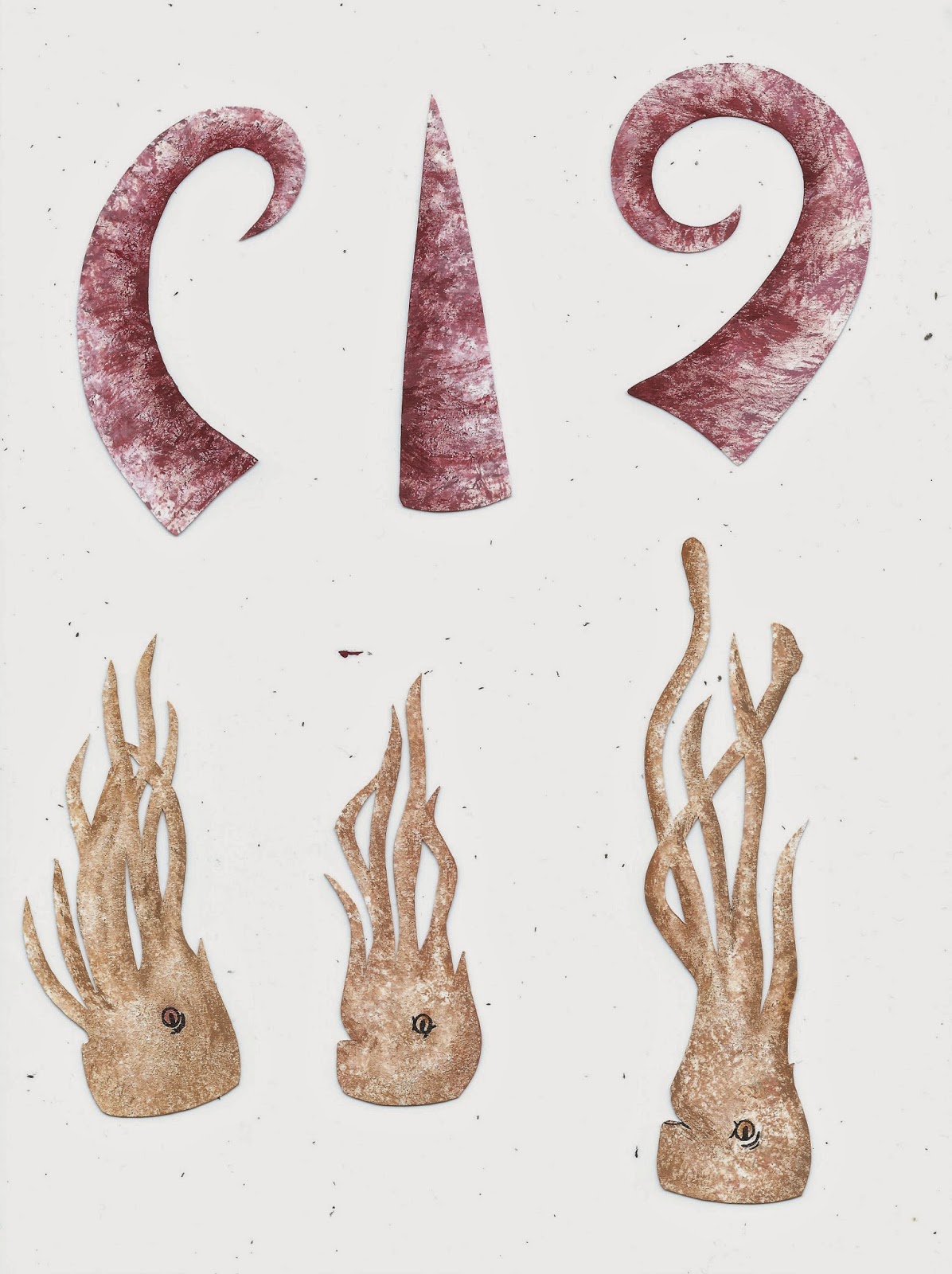Creating the textures.
I knew what kind of textures and effects i wanted to create from previously experimenting - but this stage still required a certain amount of testing. I created a large number of possible outcomes, each varying slightly. - This gave me more choice.
At this stage i feel that i was managing my time efficiently, and being thorough with my media investigation.
Application:
Most successful forms of textures so far - have been created with dry brushes, and,or, sponges.- I will be using these for my final pieces.
Brush. - Initially I found it difficult to re create some of the textures i liked from previous testing, which really frustrated me. I tried using the same quick gestural marks, but couldn't get the right effect - didn't look as delicate. Finally I solved the problem by letting paint dry on the brush. this allowed me to create the delicate, solid flick marks amongst the block faded texture.
Sponge -
I used the sponge more sparingly than previous. - letting more of the white show through, seemed to make the texture more prominent. i used a mix of light and dark tones layered onto one a noter creating depth and contrast. I also found the sponge created more effective textures when dryer like the brushes.
Although this was a lengthy process, I feel that it was worth investing a large amount of time in creating each piece. - these paper cuts are the basis of the whole book. - getting these to a good standard is integral to the success and quality of final outcome.
At times i just created a variety of patterns without thinking specifically about which subjects they could link to, and this meant that the colours used weren't right for the subject - for example the blue seaweed above. However I realised I didn't need to recreate them in the right colour, - i could save time and could alter the hues in photoshop.
- with some colours i.e. blues, reds, i also found i was able to create more of a contrast variety in tones so used these deliberately.
I think the sponge texture and dry brush work harmoniously together. - there is enough of a contrast that the two look different but work well sat along side each other.
Editing Process
Blending.
After arranging the layers into a composition i was happy with, i now needed to 'blend'. This is not something i had necessarily planned for, but something that noticed needed addressing at this stage. I wasn't happy with how the paper cut layers sat together - some more than other. i.e. particually the sand. - there was just no depth to the image, and the layers didn't seem to look very natural together.
- Solving this problem.
After experiencing with different tools, i settled on the clone stamp tool. With this i was able to select some of the sea background, and reduce it to a low opacity. - i then used this to layer onto of the sand, gradually fading it out - making it appear as though it was disappearing into the distance.
- I also used this tool to blend the sea weed to the sand, and other edges that i felt needed softening.
The final touches to the image was adding shadow and highlights using the dodge and burn tool, - this made the positioning of subjects and lighting more believable and effective.


















No comments :
Post a Comment